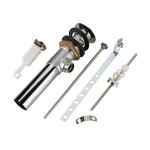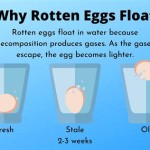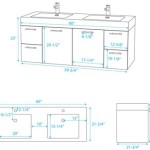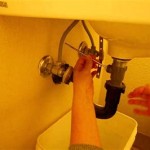Is An Egg Bad If It Floats Or Sinks? Understanding Egg Freshness
The question of whether an egg is safe to consume if it floats or sinks in water is a common one. Many individuals rely on this simple test to gauge the freshness of eggs, but understanding the science behind the test is crucial for accurate interpretation and food safety. This article will delve into the principles of the float test, explore the factors that cause eggs to float, and discuss alternative methods for determining egg freshness. It is imperative to note that the float test is not a foolproof method for determining if an egg is safe to eat; other factors should be considered as well.
The Science Behind the Float Test
The float test is predicated on the premise that the age of an egg affects its density. Fresh eggs contain minimal air inside their shell. However, eggshells are porous, allowing air to gradually enter the egg over time. As the egg ages, moisture inside the egg evaporates through the shell, and this lost volume is replaced by air. The increasing amount of air within the egg leads to a decrease in its overall density.
Density, defined as mass per unit volume, is the key factor in whether an object floats or sinks in water. Objects denser than water will sink, while objects less dense than water will float. A fresh egg, with its relatively high density due to minimal air content, will typically sink to the bottom of a bowl or glass of water. Conversely, an older egg, having accumulated more air inside, will be less dense and therefore more likely to float.
The float test is conducted by placing an egg in a container filled with enough water to fully submerge the egg. The position of the egg in the water is then observed. If the egg sinks and lies flat on its side on the bottom of the container, it is generally considered to be very fresh. If the egg sinks but stands on one end, it is still relatively fresh but should be used soon. If the egg floats, it indicates a significant amount of air has accumulated inside, suggesting it is older. This does not automatically mean the egg is spoiled, but it warrants further investigation before consumption.
Factors Influencing the Float Test Result
While the amount of air inside the egg is the primary factor affecting the float test, several other variables can influence the outcome. These factors should be taken into account when interpreting the results of the test.
Egg Size: Larger eggs tend to have more air space initially within the shell. Therefore, a larger egg may float sooner than a smaller egg, even if both are the same age. This is because the initial air space is larger to begin with, and it takes less time for the egg to reach a density lower than water.
Shell Porosity: The porosity of eggshells can vary between eggs and even within the same egg. Eggs with more porous shells will lose moisture and gain air more quickly, causing them to float sooner. Factors like the breed of the hen, its diet, and its age can all impact the porosity of the eggs it lays.
Storage Conditions: The way eggs are stored significantly affects their rate of aging. Eggs stored at room temperature will age much faster than eggs stored in the refrigerator. Refrigeration slows down the rate of moisture loss and air intake, thus prolonging the freshness of the egg. Consequently, an egg stored at room temperature may float much sooner than an egg stored in the refrigerator, even if they were laid on the same day.
Water Density: The density of the water used for the test can also influence the result, though to a lesser extent. Adding salt to the water increases its density. An egg that sinks in normal water might float in heavily salted water. This change in buoyancy is due to the increased density of the saline solution, which makes it easier for the egg to float. This variation is generally not significant under normal testing conditions using tap water, but it highlights the importance of consistent testing methods.
Because of these influencing factors, using the float test as the sole determinant of egg safety is not recommended. It's best used as one of several tools for assessment.
Beyond the Float Test: Alternative Methods for Determining Egg Freshness
While the float test can provide a general indication of egg age, relying exclusively on it to determine egg safety is imprudent. Several other methods offer more reliable assessments of egg quality and safety. These methods include visual inspection, the sniff test, and examination of the egg’s internal characteristics.
Visual Inspection: Begin by examining the eggshell. A clean, uncracked shell indicates proper handling and reduces the risk of bacterial contamination. Cracks, even hairline ones, can allow bacteria to enter the egg, compromising its safety. Also, look for any unusual discoloration or blemishes on the shell, which could indicate spoilage.
The Sniff Test: The sniff test is one of the most reliable ways to determine if an egg is spoiled. Crack the egg into a clean bowl and carefully smell it. A fresh egg should have little to no odor. A spoiled egg will emit a distinct, unpleasant sulfurous or rotten smell. This odor is caused by the production of hydrogen sulfide and other volatile compounds by bacteria as they break down the egg. If an egg has any off-putting odor, it should be discarded immediately, regardless of its appearance or the results of the float test.
Examination of Internal Characteristics: After cracking the egg, observe the appearance of the egg white (albumen) and yolk. In a fresh egg, the egg white will be thick and cloudy, and the yolk will be firm and stand tall. As the egg ages, the thick egg white thins out and becomes more watery. The yolk also becomes flatter and more prone to breaking. The presence of blood spots or meat spots (small pieces of tissue) is generally harmless and does not indicate spoilage, although they may be visually unappealing. However, extensive discoloration or unusual textures within the egg warrant caution.
Candling: Candling is a technique used commercially to assess egg quality without breaking the shell. It involves holding the egg in front of a bright light source in a darkened room. This allows individuals to see the internal contents of the egg, including the size of the air cell, yolk position, and any abnormalities. While not typically practical for home use due to the specialized equipment required, it provides valuable insight into egg quality. However, it is not a guaranteed method to detect all forms of spoilage, such as bacterial contamination without visible signs.
Use-By Date: Most commercially sold eggs have a "use-by" or "expiration" date printed on the carton. While this date is not an absolute indicator of spoilage, it is a good guideline for determining the egg’s peak freshness. Eggs can often be safely consumed for a few weeks after the use-by date, provided they have been properly stored and show no signs of spoilage. Always prioritize the other methods of assessment (smell, appearance) over solely relying on the use-by date.
In summary, the float test can be a helpful initial indicator of egg age, but it should not be the sole determinant of egg safety. Combining the float test with visual inspection, the sniff test, and examination of the egg’s internal characteristics provides for a more comprehensive and reliable assessment of egg quality. If there is any doubt about an egg’s safety, it is always prudent to discard it to prevent potential foodborne illness.

Why Bad Eggs Float And Good Sink

How To Tell If A Chicken Egg Is Bad Thistle Downs Farm

Why Do Old Eggs Float Scienceabc
An Egg Sinks In Fresh Water But Floats A Strong Salt Solution Why Quora

How To Check If Eggs Have Gone Bad 4 Infallible Methods

Egg Float Test Matt Coon Agency

Egg Float Test Fact Or Fiction Chickens And More

Fresh Egg Test Sink Or Float

How To Tell If Your Eggs Are Off Australian

Egg Float Test Myth Is It Accurate







